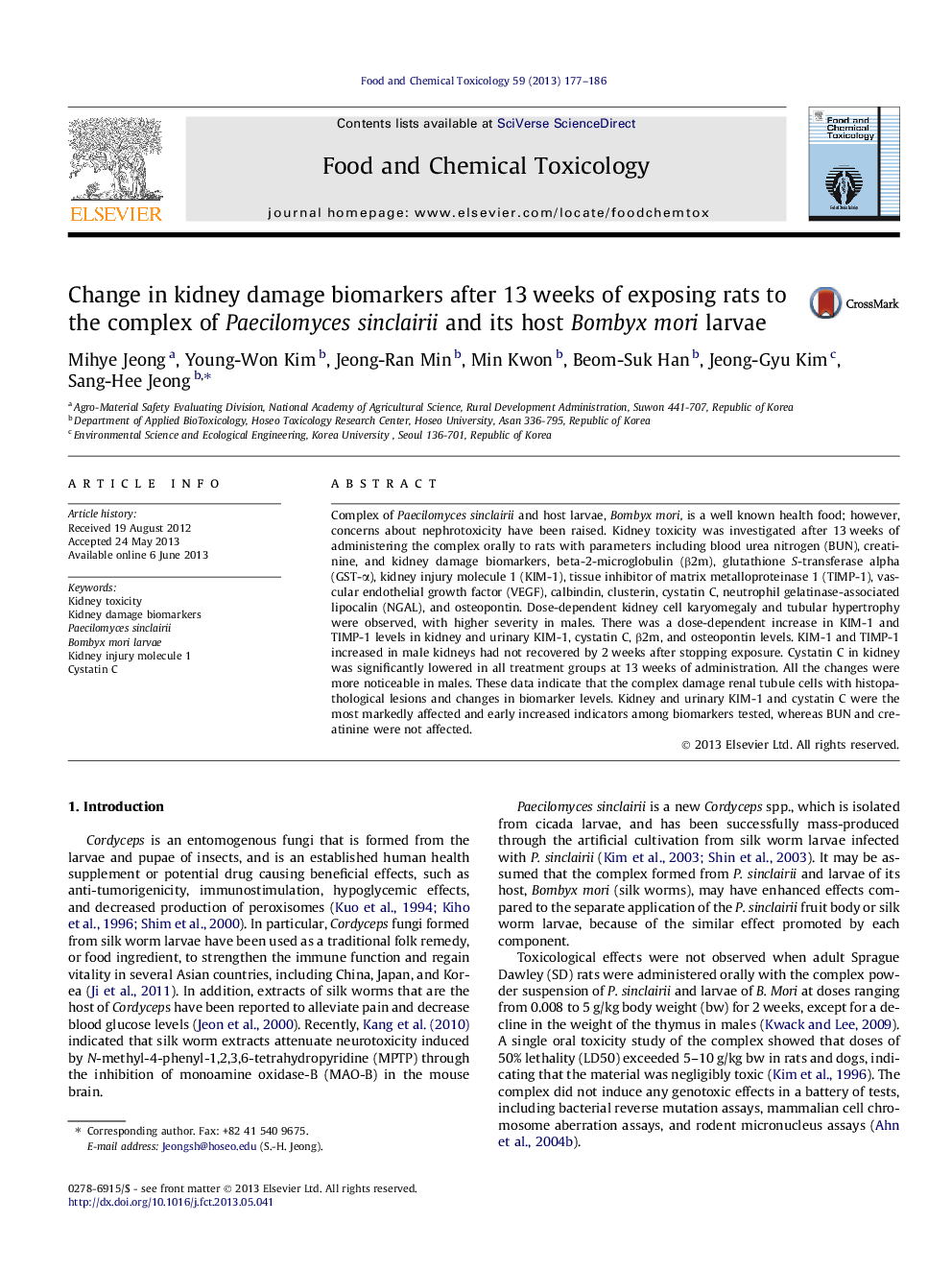| Article ID | Journal | Published Year | Pages | File Type |
|---|---|---|---|---|
| 5851014 | Food and Chemical Toxicology | 2013 | 10 Pages |
Abstract
Complex of Paecilomyces sinclairii and host larvae, Bombyx mori, is a well known health food; however, concerns about nephrotoxicity have been raised. Kidney toxicity was investigated after 13 weeks of administering the complex orally to rats with parameters including blood urea nitrogen (BUN), creatinine, and kidney damage biomarkers, beta-2-microglobulin (β2m), glutathione S-transferase alpha (GST-α), kidney injury molecule 1 (KIM-1), tissue inhibitor of matrix metalloproteinase 1 (TIMP-1), vascular endothelial growth factor (VEGF), calbindin, clusterin, cystatin C, neutrophil gelatinase-associated lipocalin (NGAL), and osteopontin. Dose-dependent kidney cell karyomegaly and tubular hypertrophy were observed, with higher severity in males. There was a dose-dependent increase in KIM-1 and TIMP-1 levels in kidney and urinary KIM-1, cystatin C, β2m, and osteopontin levels. KIM-1 and TIMP-1 increased in male kidneys had not recovered by 2 weeks after stopping exposure. Cystatin C in kidney was significantly lowered in all treatment groups at 13 weeks of administration. All the changes were more noticeable in males. These data indicate that the complex damage renal tubule cells with histopathological lesions and changes in biomarker levels. Kidney and urinary KIM-1 and cystatin C were the most markedly affected and early increased indicators among biomarkers tested, whereas BUN and creatinine were not affected.
Related Topics
Life Sciences
Agricultural and Biological Sciences
Food Science
Authors
Mihye Jeong, Young-Won Kim, Jeong-Ran Min, Min Kwon, Beom-Suk Han, Jeong-Gyu Kim, Sang-Hee Jeong,
